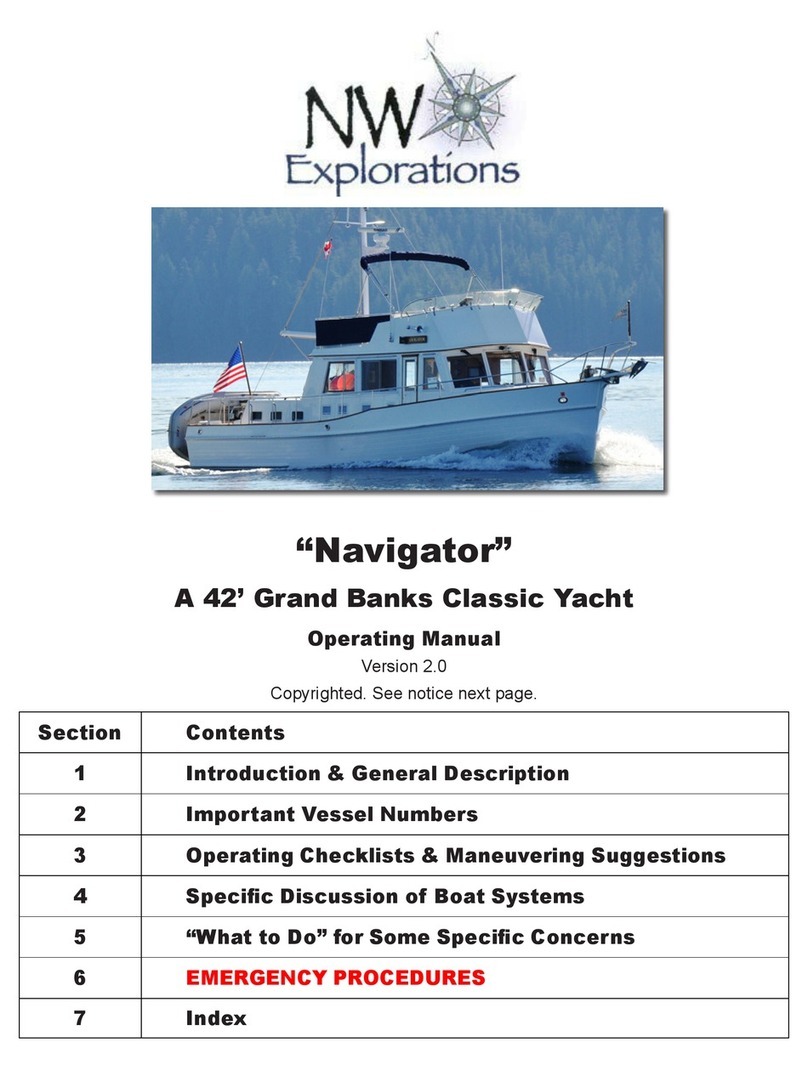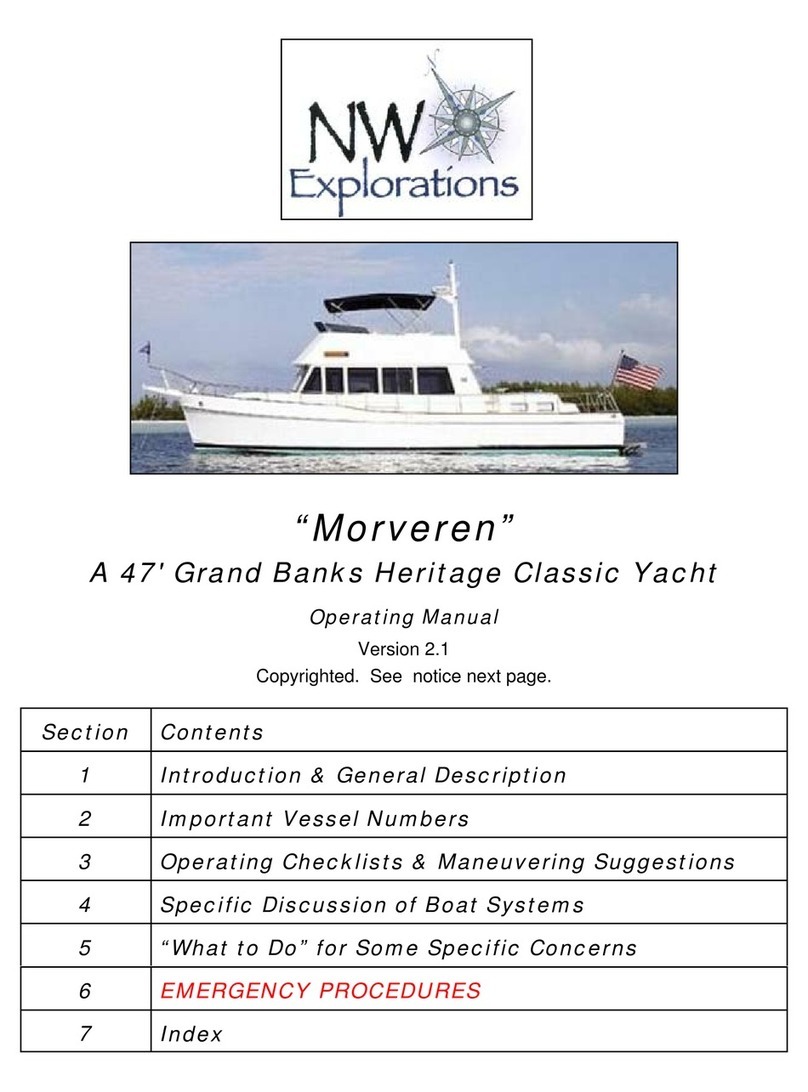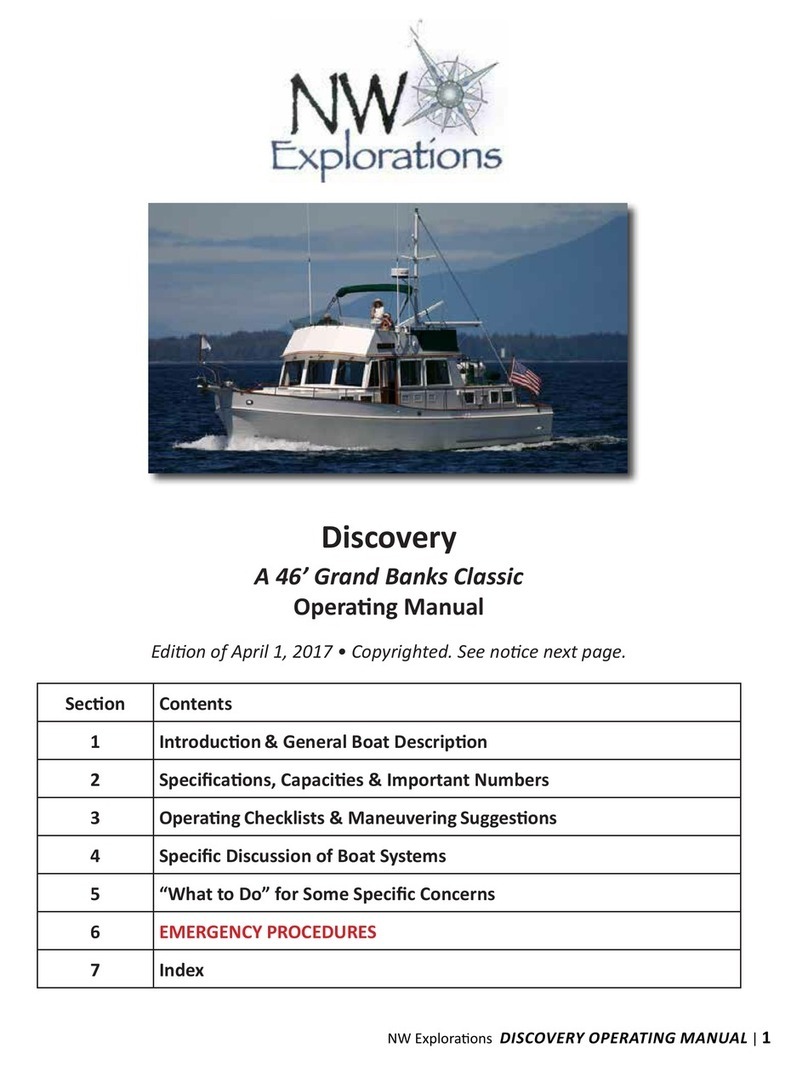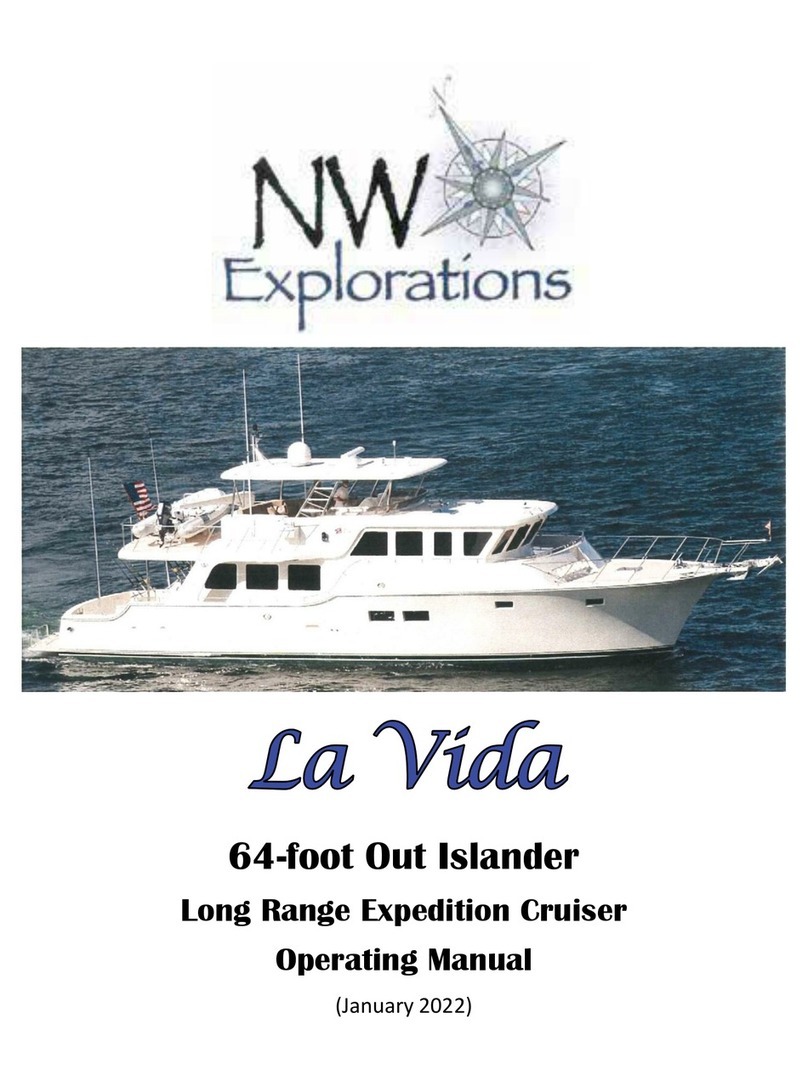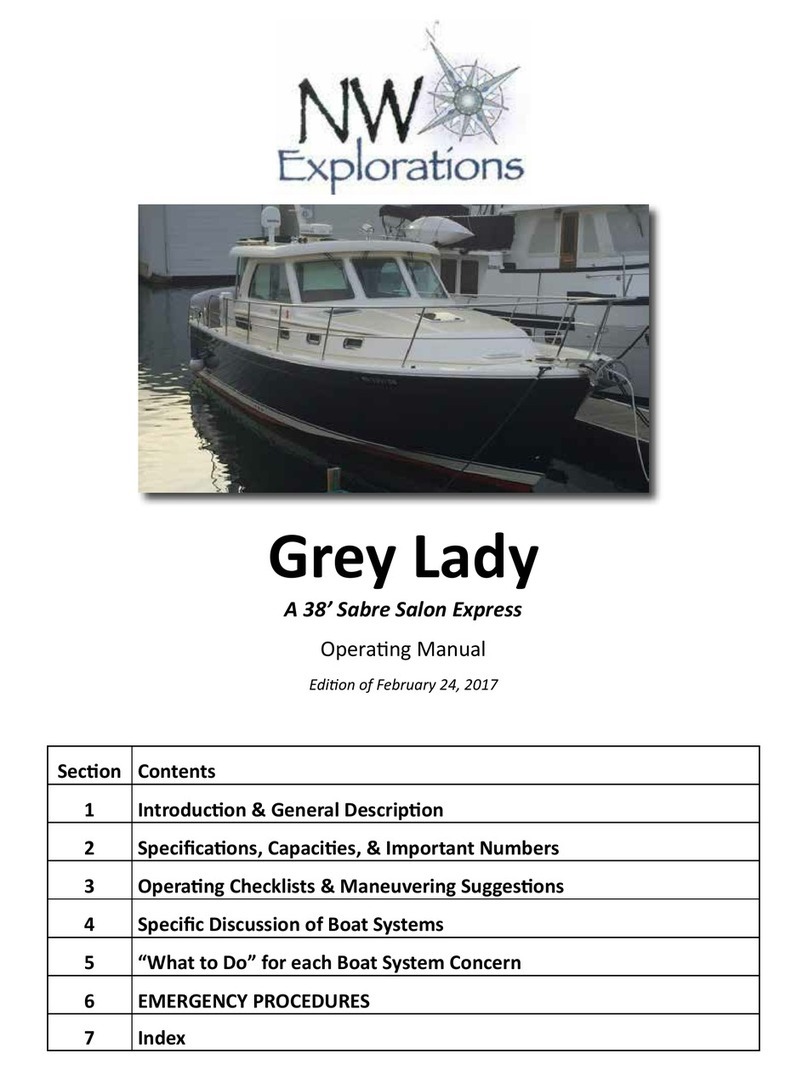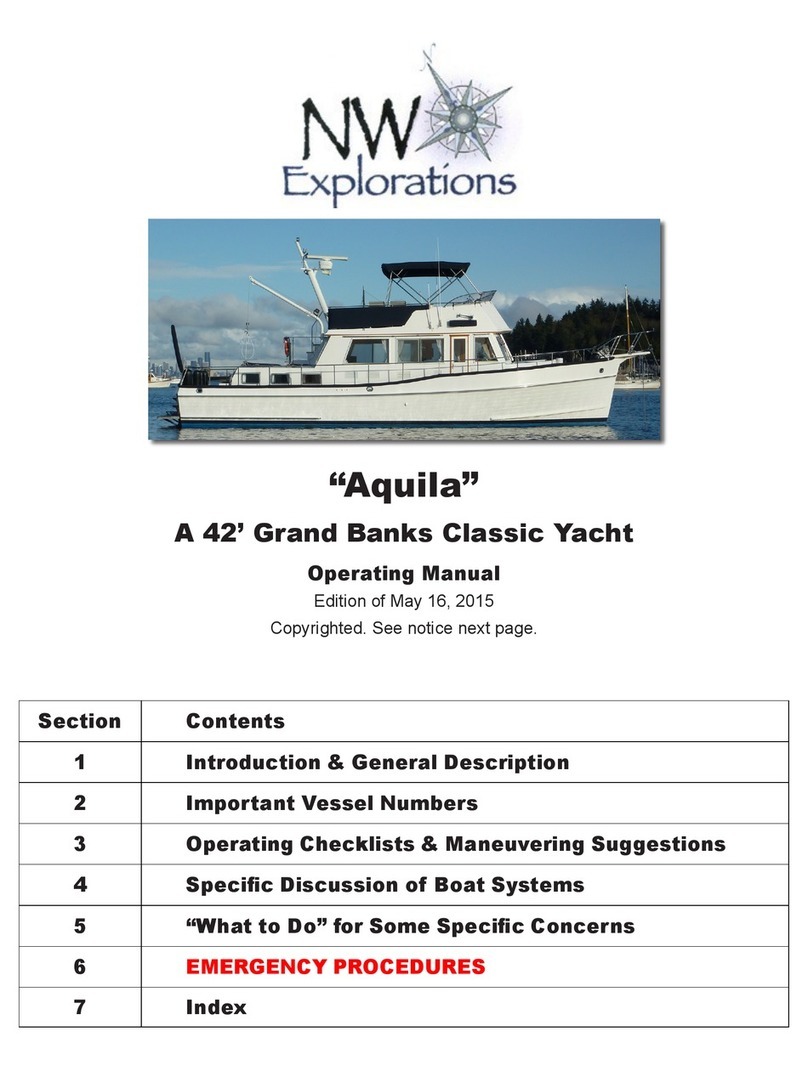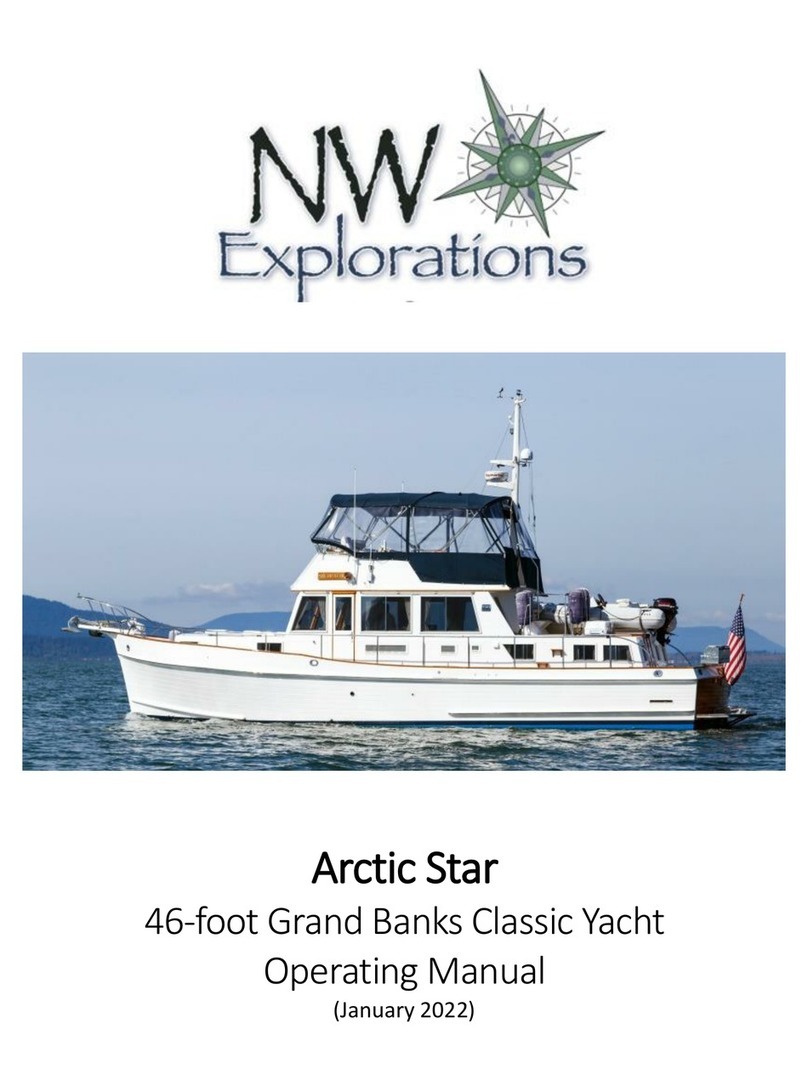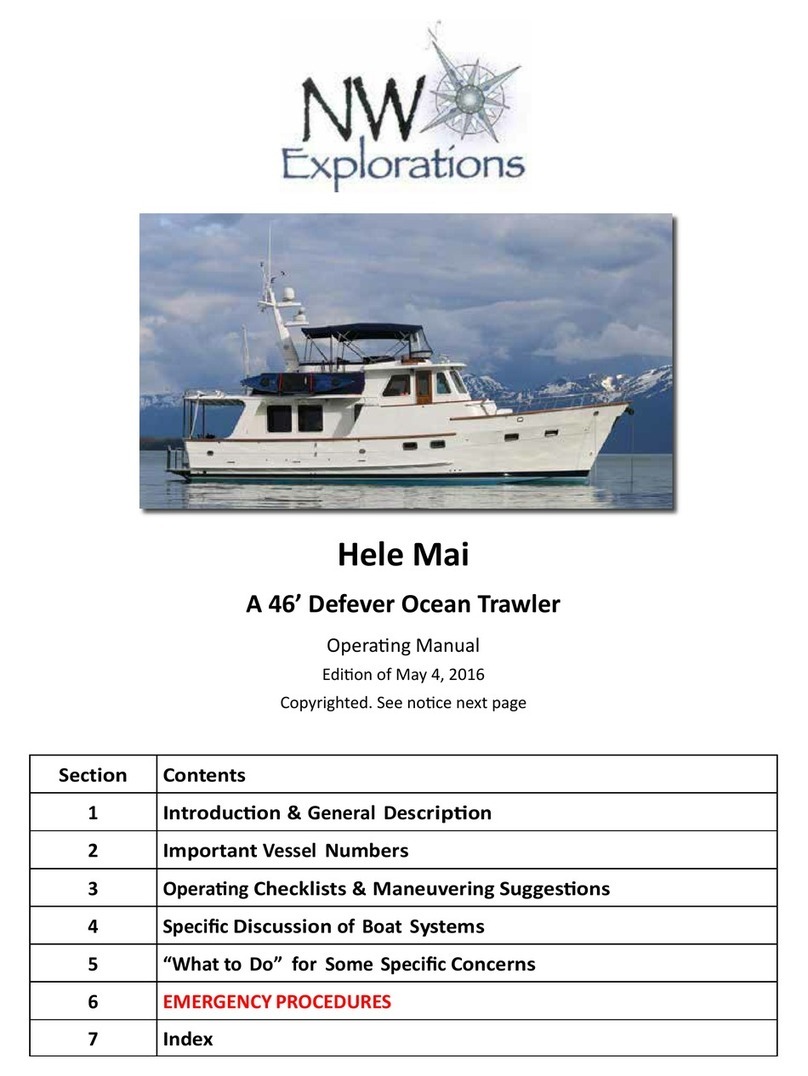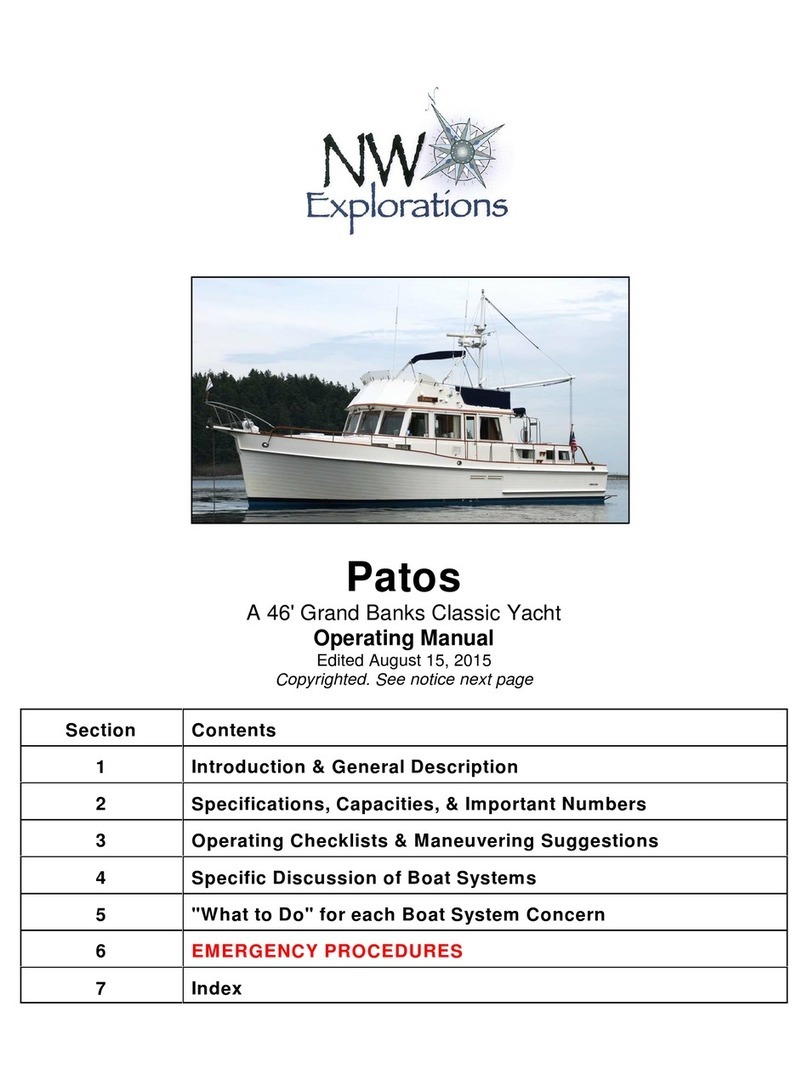
4| KONOCTI BAY OPERATING MANUAL NW Exploraons
1B: General Descripon of this Vessel
1B1: Exterior
Flybridge, Cockpit, Side & Forward Decks
The 46’ Defever Trawler is a tradional yacht design,
with berglass hull, cabin, and y- bridge structures, a
teak swim step, teak decks, rails, and gunwale caps, and
stainless steel welded ngs and handrails. The window
frames are of painted wood with sliding glass panes.
Of parcular note are the easy walk- around decks,
enabling safe, secure passage about the boat by
passengers and crew. A roomy cockpit secon with a
storage lazaree beneath is useful for shing and dinghy
handling as it is launched. A swim shower outlet is
provided in the cockpit.
On the side decks are the four fuel lls, two port-side and the other two
starboard. A holding tank pump-out deck ng is to starboard. The water tank
ll is to the right of the mooring bit on the bow for the one tank. Fresh and salt
water faucets are at the bow
Forward on the bow deck is the anchor windlass switches, allowing chain
movement both “up “and “down” electrically. The anchor is retracted into the
bow pulpit which hangs out over the bow to give beer chain clearance from
the hull than otherwise possible.
The pulpit is strong and braced, easily supporng not only the anchor during
hauling but also an aending crew member if necessary. Aer passing over the
winch, the chain goes below decks via a hawse pipe in the foredeck.
There are shore power connecons at both the bow and stern,
selected by the shore power switch in the electric panel; when
this cable is to be disconnected, the switch should rst be turned
to the “o” posion to avoid arcing which could damage the plug
contacts. The boat’s 50-amp shore power cable is 50 feet long. It
is located in the a lazaree. The forward 30 amp cable is stored
in the Portuguese locker and plugs into the receptacle on the port
side on the front of the Portuguese.
Above the salon via the inside staircase steps from the pilothouse is the large ying bridge. At the a end of the boats
davit is the plug in for the davit controls. The controls are found in the pilothouse in the cabinet to the starboard of the
helm.
In the seee’s forward compartment are the dual propane tanks for operaon of the stove and BBQ.
Fully forward on the ybridge is the helm structure, with substanal room for engine controls and instruments plus the
ship’s full complement of electronics. To port forward on the ybridge a half-door with the sliding hatch above accesses
the pilothouse stairway. The door and hatch are secured both open and closed by sturdy hardware.
Konoc Bay
The foredeck with windlass.
Electrical outlet at bow.
